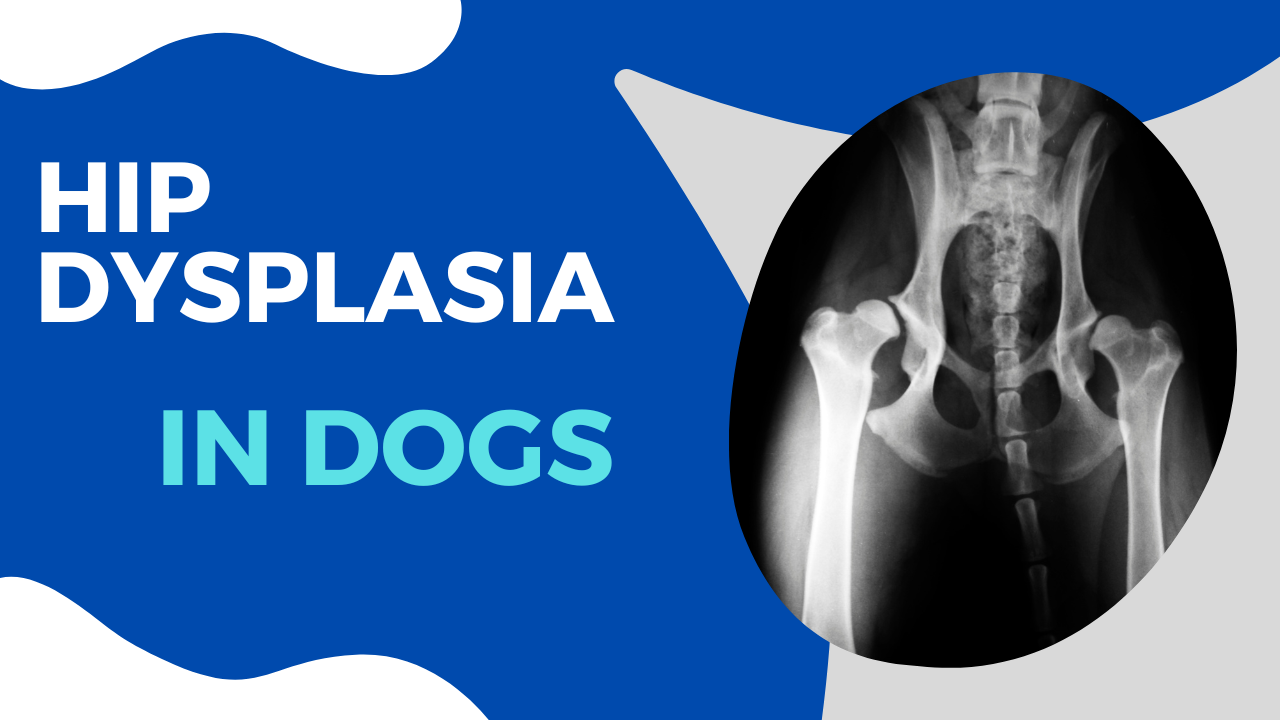Our loyal four-legged companions are part of our families and deserve the best care we can provide. Hip dysplasia is a common condition that can affect certain dog breeds. It’s essential to understand what it is, how to recognise it, and what steps to take to assist your furry friend. In this article, we will look closer at hip dysplasia in dogs and how to deal with it.
My dog Bruce has a severe form of hip dysplasia. If left untreated, he would be in great pain and unable to walk correctly. I am sharing what I have learned along the way and what worked well for us. I am not a doctor. You should always consult your vet if you think your dog suffers from hip dysplasia.
What is hip dysplasia?
Hip dysplasia is a condition in which the hip joint is not adequately developed. This can lead to a poor fit between the femur and the hip socket, which can cause pain, inflammation, and arthritis. This condition can be hereditary and is frequently seen in certain dog breeds, such as German Shepherds, Labrador Retrievers, and Golden Retrievers. However, it can also occur due to environmental factors, like excessive growth at a young age or excess weight.

Recognising hip dysplasia
Recognising hip dysplasia in your dog can sometimes be challenging, as dogs are adept at hiding pain.
Some common symptoms include:
- Difficulty getting up or lying down
- Limping or favouring one leg, especially after exertion
- Reduced activity and less interest in playing
- Difficulty climbing stairs or jumping
- A “wobbly” walk
If you notice any of these symptoms, you should consult a veterinarian for an accurate diagnosis.
Diagnosis and treatment
A veterinarian can diagnose hip dysplasia through physical examination, X-rays, and sometimes additional tests. The treatment depends on the severity of the condition. Some possible approaches include:
Weight management
Excess weight can exacerbate the symptoms, so maintaining a healthy weight is essential. Remember that the joints must carry all that weight and absorb the shocks while walking. More weight means a stronger pull of gravity.
Medication
Anti-inflammatory pain relievers may be prescribed to reduce pain and inflammation. Bruce gets his monthly shot of Librela at the vet. Remember that painkillers such as Metacam hurt the organs and can result in kidney failure when used long-term.
Supplements
I’m obsessed with finding ways to keep my dogs alive and healthy for as long as possible. I want them all to live forever. I firmly believe that giving them natural supplements helps with that. Our dogs get a combination of green lip mussel, glucosamine, MSM and chondroitin.
Physiotherapy
Specific exercises can strengthen the muscles around the hip joint and improve mobility. Massages do wonders for dogs, too! Don’t try to DIY. You can do a lot of damage if you do it wrong. Bruce gets one every two weeks.
Laser therapy
Laser therapy uses specific wavelengths of light to stimulate healing. The aim is to reduce inflammation as well as muscle fatigue and pain. We started with twice a week, and now he gets one session every two weeks.

Hydrotherapy
Exercising in the water is great because it strengthens the muscles and joints without putting pressure on the joints. Bruce used to go to hydrotherapy every month. In the beginning, he went weekly. Now that we have our own pool, we swim with him at home. We need to stimulate him to use his bad leg. Otherwise, he leaves it hanging. Walking in water is even better than swimming!
Regular exercise
Regular exercise is important to keep the muscles strong and the joints flexible. It’s better to walk 20 minutes every day on a flat surface or slightly uphill than to do nothing during the week and take a 3-hour hike on the weekend.
Surgery
In severe cases, surgery may be necessary to correct the hip joint. This can range from hip replacement to removing bone fragments. Initially, they advised us to replace Bruce’s hip. I’m so glad we asked for a second opinion and tried other options first. He’s doing great now. You can always choose to have the hip replaced later on if nothing else is working. Recovery is long, and you will need to do physio-/hydrotherapy anyway.
Prevention
While hip dysplasia can sometimes be genetically predisposed, there are measures you can take to reduce the risk, especially if you have a puppy or are considering adopting one.
Choose a reputable breeder
If you’re considering a purebred dog, look for a breeder who follows selection criteria to minimise hip dysplasia.
Manage growth
Prevent excessive growth by providing a balanced diet and appropriate exercise for young dogs. For example, don’t take a 2-month-old puppy for a 1-hour hike.
Regular exercise
Ensure sufficient physical activity to strengthen muscles and maintain joint flexibility.
Give supplements
Supplements are great for prevention. All my dogs get them, not only Bruce.
Conclusion
Hip dysplasia is a challenge some dogs may face, but with timely diagnosis and proper care, we can help our furry companions lead comfortable and active lives. By being vigilant about symptoms, scheduling regular veterinary check-ups, and taking preventive measures, we can positively impact the health and well-being of our beloved pooches.

